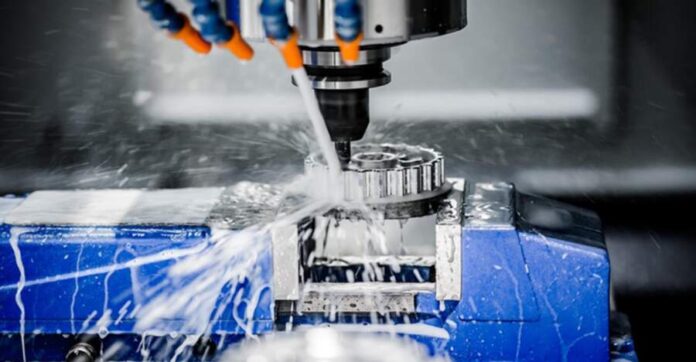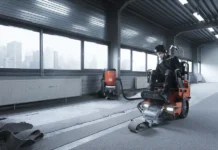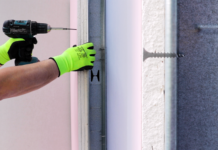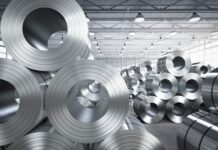Machining processes are generally divided into two, namely conventional machining and computerical control machining. In a production process sometimes there are products that require a special machining process. This special process usually has obstacles in the form of limited access to machines and tools. In this situation, a custom machining process is needed with the aim of reducing the production process and maximizing existing machines and ultimately being able to meet the demands of the required production process.
Impact of the custom machining process can indeed meet the demands of product specifications or the requested production process, increase productivity, machine and human efficiency, as well as cut time wasted due to the setup process, but before that happen this process require proper implementation so that it doesn’t become a problem.
Application of Custom Machined Components
Many things in the conventional machining production process in a company that can be improved with custom machining and of course many benefits will also be felt by entrepreneurs by applying it.
Prototyping machining
Applications using custom machining are usually used in the prototyping process. Prototyping is different from the mass production process because in prototyping there are usually no standard tools set by the SOP, it is urgent because of deadline demands.
In the process of making prototypes, custom machining processes are often used, either in the form of custom cutting tools, custom chuck jaws, custom holders and others. The customization is used to produce a prototype that matches the requested specifications.
Customize equipment
As previously explained, the application of using custom machining can be applied to various kinds of equipment in the form of cutting tools, chuck saws, holders, fixtures and so on.
Picture A. standard drill
Picture B. standard end mill
Picture C. special drill
As the example shown in the picture above shows, to make a counterbore, the conventional machining process required is the D1 drilling process using machine A and the D2 drilling process using the end mill on machine B. In this case, 2 machines and 2 different tools are needed, but if we use custom machining method the process of making counterbore holes can be trimmed into 1 machine made with 1 tool in 1 processing time. Custom machining is done by making special drills using inserts as shown in the picture above.
Easy Replacement of Components
Process of making drill holes using the custom machining method (special drills) also makes it easier for operators to replace worn-out drill bit components. If in the conventional machining method the operators have to remove the drill and then re-sharpen it before it can be reused, in the custom machining method (special drill) the operators only need to replace the blunt insert with a new insert in a matter of seconds.
Imagine if we could cut every second wasted due to the process of sharpening a dull drill / end mill into seconds that could produce a profitable product.
Increase Productivity
We have data of the cutting time for the D1 drill process is 5 seconds and for the boring process with the end mill 5 seconds then every 100 products produced by the D1 drill and D2 end mill experience wear and tear which requires a grinding time of 20 seconds. Then the engineer does custom machining by making a special drill like the previous picture. The cutting time data obtained after custom machining on the D1& D2 drill process is 10 seconds, then every 100 special drill insert products wear out and the operator replaces a new insert it takes 5 seconds.
Trimmed processes, maximized machines, easy maintenance of tools (special drills) can minimize wasted time in a mass production process flow. Thus productivity can be increased and of course bring benefits to the company.
Important facts for successful custom machining
There are several important facts that must be considered by entrepreneurs if the custom machining process carried out can achieve success.
Availability of different materials
A company that implements an engineering to order process will of course always be faced with various kinds of product requests to be made. The difference in product form is certainly a challenge for entrepreneurs where they have to adjust the machining process carried out with the availability of existing machines as well as with the availability of existing stock tools. Therefore, a custom machining process is needed to support the continuity of their business.
Accessibility to Multiple CNC Machines
As explained in the previous example, the custom machining process is carried out by combining the drill functions D1 and end mill D2 into a special drill, and changes occur not in the machine. This means that by using any type of machine as long as what is needed is the drilling process, the special drill can still be used.
Picture d. standard chuck jaws
Picture e. custom chuck jaws
Custom machining showed on standard chuck jaws can be seen in picture e. Although standard chuck jaws have been customized, the functionality and access to multiple cnc machines can still be used.
Cutting of parts
Cutting workpieces/parts with a custom machining process is different from the cutting process in a regular machining process. There are several cutting parameters that must be adjusted in the process, for example: if in conventional machining the drilling process with drill d1 (example in this case Φ11) we must set the spindle rotation to 500rpm and for drill Φd2 (example in this case Φ16) is 200rpm, when custom process machining is done by combining the drill and end mill functions into a special drill so the cutting spindle rotation parameter becomes 250rpm (usually the manufacturer includes a reference for parameter calculations) of course it will change according to the type of insert used.
Polishing of parts
The success of custom machining is also determined by the part polishing process, why? Because sometimes when the tool is blunt (insert special tool used) it will produce a rough and not smooth surface. The surface that is not smooth can be repaired by polishing. The polishing process is a perfecting process in a production line, if the product/part being worked on requires a smooth surface specification, although in some cases custom machining this polishing process is not necessary.
Why we need customized machining and tools?
In a company’s journey sometimes there are some requests for unusual products, difficult to work on, emergency needs, colliding with the availability of machines and tools. If the entrepreneurs do not take the offer which means also miss the opportunity to make a profit then it is a very unfortunate action.
So to solve this problem, entrepreneurs need a custom machining/tool process in order to benefit the company. In many cases, the part production process that requires custom machining/tools provides a greater price advantage.
Conclusion
There are still many custom machining applications that can be applied in a company’s production process flow. Some of the examples above are just an illustration that custom machining is a kaizen process or continues improvement if the process is a mass production process, and custom machining is a problem solver if what is being faced is the process of making prototypes.
We can draw a conclusion that using custom machining in the part production process to cutting down on wasted time, increasing engine efficiency (which means saving electricity/fuel resources) and efficiency of recruited employees is one of the best solutions for entrepreneurs to increase company profits.



































































